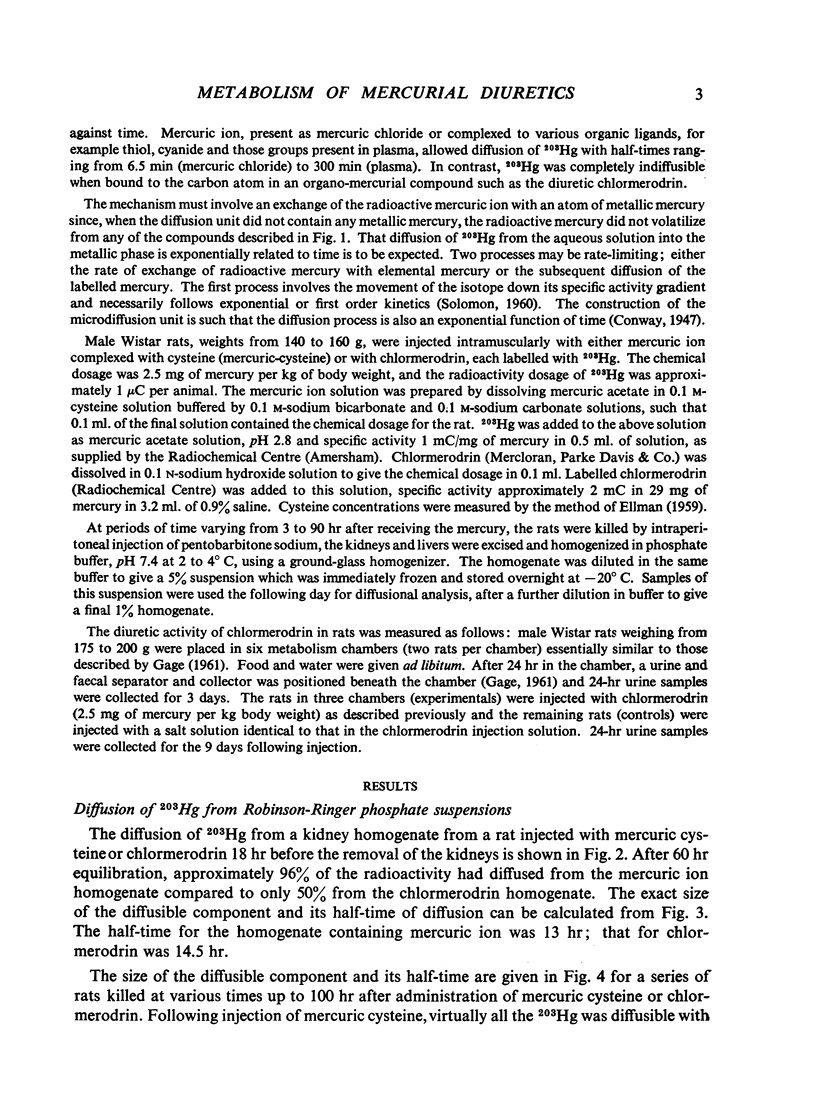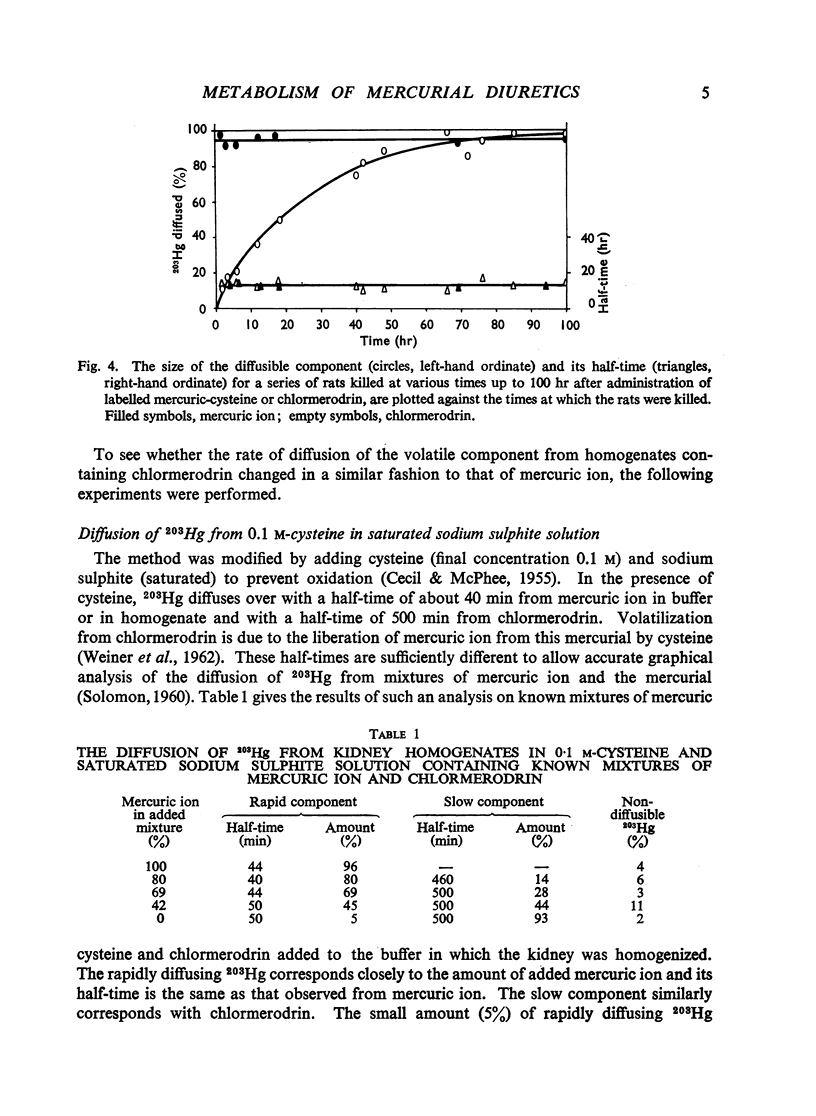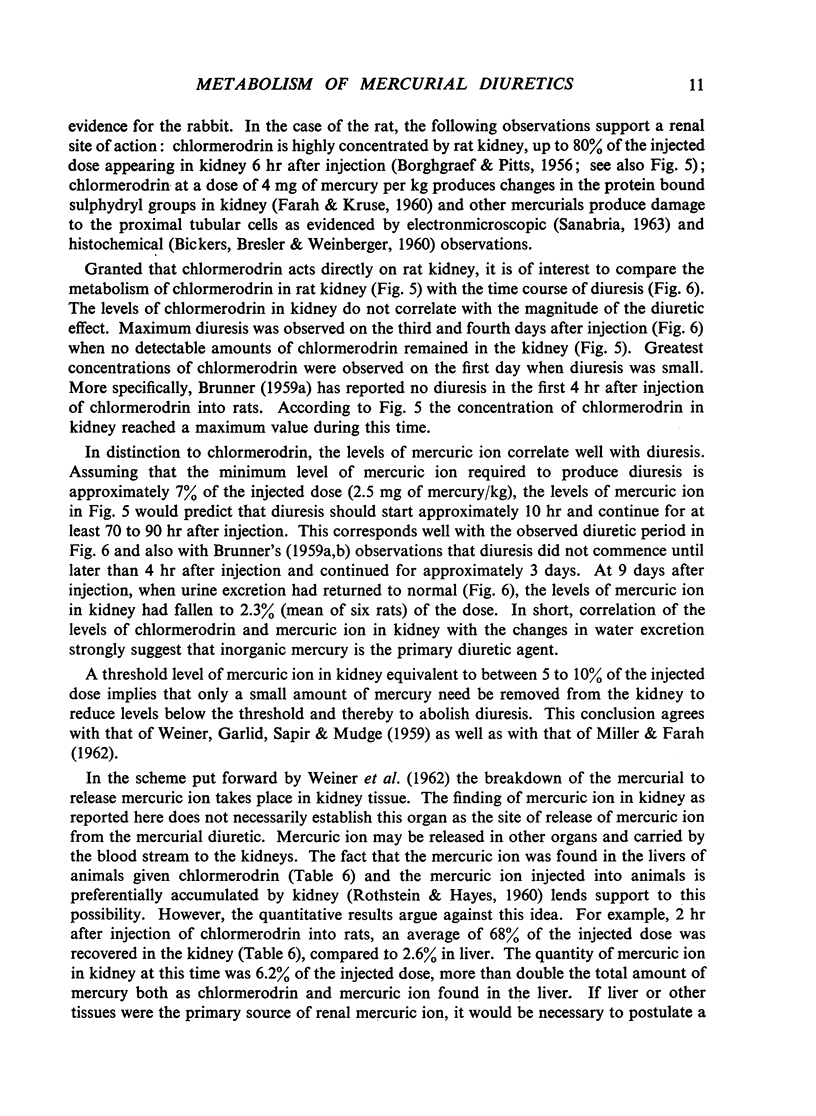Full text
PDF












Selected References
These references are in PubMed. This may not be the complete list of references from this article.
- BICKERS J. N., BRESLER E. H., WEINBERGER R. The acute effect of an organic mercurial on the rat kidney: a histochemical study. J Pharmacol Exp Ther. 1960 Mar;128:283–288. [PubMed] [Google Scholar]
- BORGHGRAEF R. R., PITTS R. F. The distribution of chlormerodrin (neohydrin) in tissues of the rat and dog. J Clin Invest. 1956 Jan;35(1):31–37. doi: 10.1172/JCI103249. [DOI] [PMC free article] [PubMed] [Google Scholar]
- BRUNNER H. [Renal water and electrolyte excretion of thirsty rats within 32 hours after a single intravenous dose of chlormerodrin or mersalyl]. Naunyn Schmiedebergs Arch Exp Pathol Pharmakol. 1959;236:521–539. [PubMed] [Google Scholar]
- Bartram E. A. EXPERIMENTAL OBSERVATIONS ON THE EFFECT OF VARIOUS DIURETICS WHEN INJECTED DIRECTLY INTO ONE RENAL ARTERY OF THE DOG. J Clin Invest. 1932 Nov;11(6):1197–1219. doi: 10.1172/JCI100472. [DOI] [PMC free article] [PubMed] [Google Scholar]
- CAMPBELL D. E. Modification by bromcresol green or probenecid of the excretion and diuretic effect of three mercurial diuretics, Diurgin, chlormerodrin and mercumatilin. Acta Pharmacol Toxicol (Copenh) 1960;17:213–232. doi: 10.1111/j.1600-0773.1960.tb01835.x. [DOI] [PubMed] [Google Scholar]
- CECIL R., McPHEE J. R. A kinetic study of the reactions on some disulphides with sodium sulphite. Biochem J. 1955 Jul;60(3):496–506. doi: 10.1042/bj0600496. [DOI] [PMC free article] [PubMed] [Google Scholar]
- ELLMAN G. L. Tissue sulfhydryl groups. Arch Biochem Biophys. 1959 May;82(1):70–77. doi: 10.1016/0003-9861(59)90090-6. [DOI] [PubMed] [Google Scholar]
- FARAH A., KRUSE R. The relation of mercurial diuresis to cellular protein-bound sulfhydryl changes in renal cells. J Pharmacol Exp Ther. 1960 Sep;130:13–19. [PubMed] [Google Scholar]
- GAGE J. C. The distribution and excretion of inhaled mercury vapour. Br J Ind Med. 1961 Oct;18:287–294. doi: 10.1136/oem.18.4.287. [DOI] [PMC free article] [PubMed] [Google Scholar]
- KESSLER R. H., LOZANO R., PITTS R. F. Studies on structure-diuretic activity relationships of organic compounds of mercury. J Clin Invest. 1957 May;36(5):656–668. doi: 10.1172/JCI103466. [DOI] [PMC free article] [PubMed] [Google Scholar]
- LIGHT A. E. Diuretic activity of various compounds as determined by urinary excretion studies in rats. J Am Pharm Assoc Am Pharm Assoc. 1959 Jun;48(6):335–345. doi: 10.1002/jps.3030480612. [DOI] [PubMed] [Google Scholar]
- MILLER T. B., FARAH A. E. On the mechanism of the inhibition of mercurial diuresis by p-chloromercuribenzoic acid. J Pharmacol Exp Ther. 1962 Apr;136:10–19. [PubMed] [Google Scholar]
- MUDGE G. H., WEINER I. M. The mechanism of action of mercurial and xanthine diuretics. Ann N Y Acad Sci. 1958 Feb 3;71(4):344–354. doi: 10.1111/j.1749-6632.1958.tb46761.x. [DOI] [PubMed] [Google Scholar]
- SANABRIA A. Ultrastructural changes produced in the rat kidney by a mercurial diuretic (meralluride). Br J Pharmacol Chemother. 1963 Apr;20:352–361. doi: 10.1111/j.1476-5381.1963.tb01474.x. [DOI] [PMC free article] [PubMed] [Google Scholar]
- WEINER I. M., GARLID K., SAPIR D., MUDGE G. H. The effect of dimercaprol (BAL) on the renal excretion of mercurials. J Pharmacol Exp Ther. 1959 Dec;127:325–331. [PubMed] [Google Scholar]
- WEINER I. M., LEVY R. I., MUDGE G. H. Studies on mercurial diureis: renal excretion, acid stability and structure-activity relationships of organic mercurials. J Pharmacol Exp Ther. 1962 Oct;138:96–112. [PubMed] [Google Scholar]


